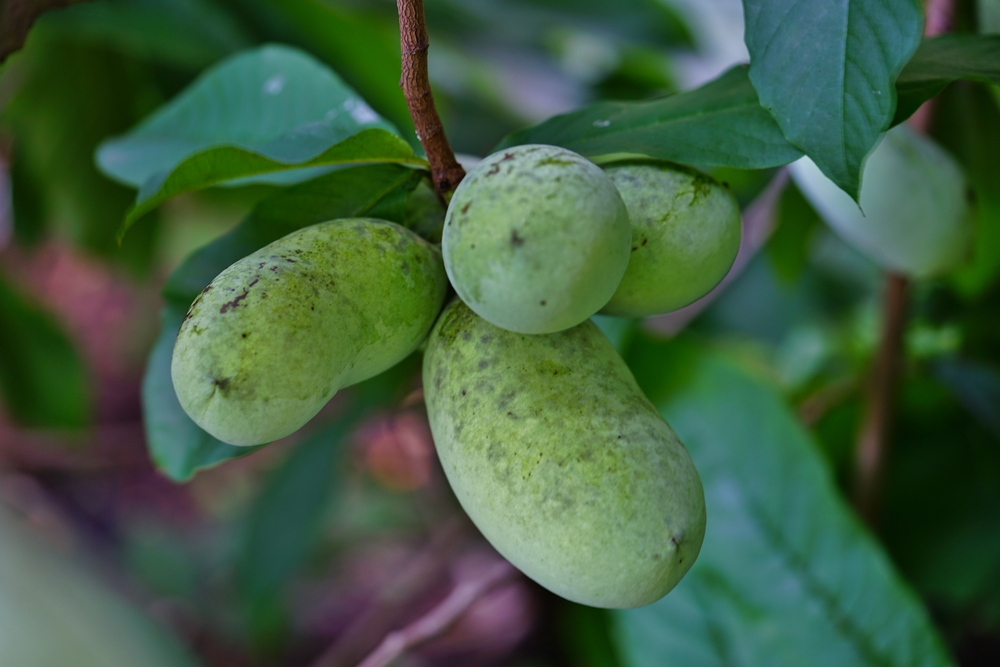
Finding free food is always a cause for celebration among the homesteading types, and the pawpaw is a prized yet often forgotten option.
Considered the largest native North American fruit, pawpaws grow in 26 US states stretching from Texas to Canada and taste reminiscent of fruits from the tropics.
There’s a lot you can do if you’re lucky enough to stumble upon a patch of pawpaws.
Let’s look at what makes this fruit so unique.
What is the Pawpaw?
Often referred to as the Indiana banana, poor man’s banana or bandango, pawpaws are found in wetland areas across the United States.
They are the only North American native of the annonaceae family, though some distant relatives live along the equator, including the ylang ylang (custard apple).
Native Americans valued pawpaws as a food source, and they also used their fibrous bark to construct baskets and nets. The tree was also a favorite of Thomas Jefferson, who grew saplings at home in Monticello and sent samples to Europe.
Pawpaw fruit is filled with vitamin C and healthy fats, and the Lewis and Clark expedition once subsisted on nothing but the fruits for three days during their expeditions out west.
Though pawpaw fruit and baked goods were a common sight on settler’s tables in centuries past, most Americans today have never tasted one, much less heard of them. That’s starting to change, as this near-forgotten fruit is having a moment.
People are rediscovering the value and versatility of a local fruit that tastes like it’s from the equator, and you can join them by foraging for your own supply.
Where to Find Pawpaw Fruit
These fruiting trees thrive along river bottoms but have started expanding their range into higher, dryer regions as well. This is partly due to booming deer populations, as they tend to eat the tree’s competitors while avoiding the pawpaws themselves so they can take over.
Pawpaws grow on small understory trees with large ovular leaves that can grow over twenty inches long. Though they typically grow in shaded thickets, the trees do best when they get sunlight.
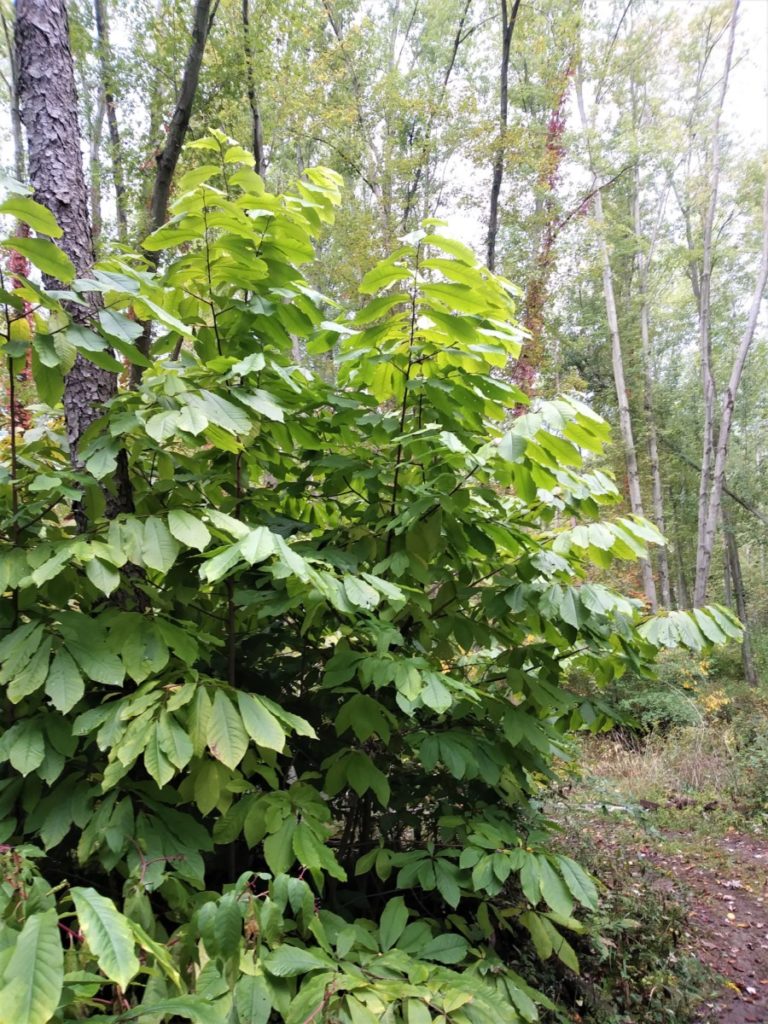
Pawpaw flowers bloom in the spring. Don’t let their beautiful burgundy coloring trick you, as they are designed to smell like rotting flesh to attract the flies that pollinate them. In fact, some enthusiasts take things a step further by hanging chicken skins and other meat scraps near a pawpaw grove to entice them.
Pawpaw trees spread by sending runners out from one original tree, meaning that you’re more likely to find a thicket of trees than one standing alone. This also means that each pawpaw tree within a patch will be a genetic clone of every other.
Too much similarity can pose problems, though, as the trees require some genetic diversity to produce fruit.This makes productive pawpaw patches somewhat tricky to track down. If you find one, make sure to frequent it yearly!
Note: You may have luck finding local pawpaw sources through the Falling Fruit map, a collaborative map of food foraging opportunities around the globe.
How to Harvest Pawpaw Fruit
Depending on where you live, pawpaw fruit is harvestable from late August through October. The fruits grow in clusters (similar to bananas), with each kidney-shaped fruit coming in between three and six inches long.
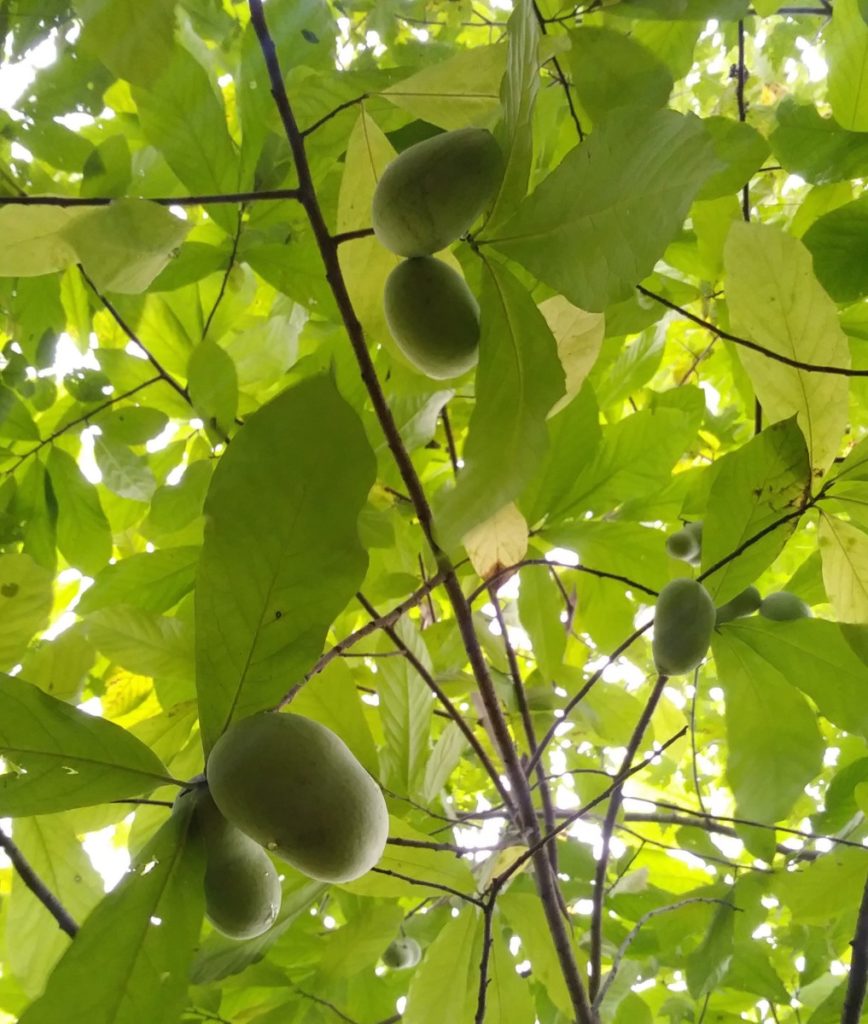
They start off firm and green with black spots and start to soften and yellow as they ripen, to the point that they may fall off the tree.
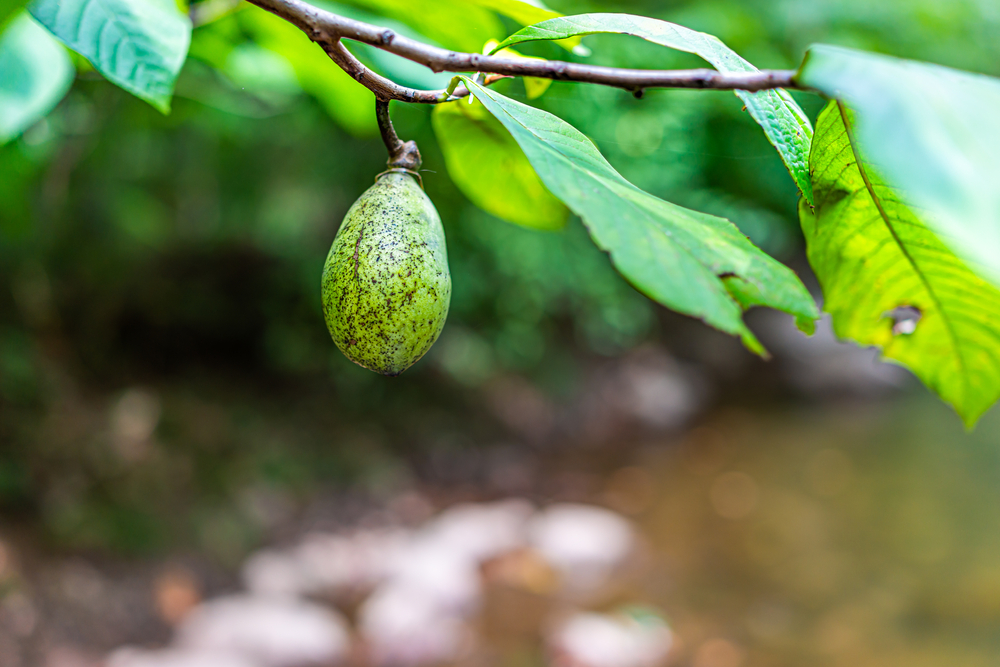
The fruit is ready to eat once it feels similar to a ripe peach. Short of touching them, you can tell when they are ready by the presence of a fruity smell.
Harvest quickly once they seem ready, as forest animals may otherwise beat you to the bounty. If you prefer not to play the waiting game, unripe pawpaws will keep in the fridge for up to two weeks, at which point you can let them ripen on the counter.
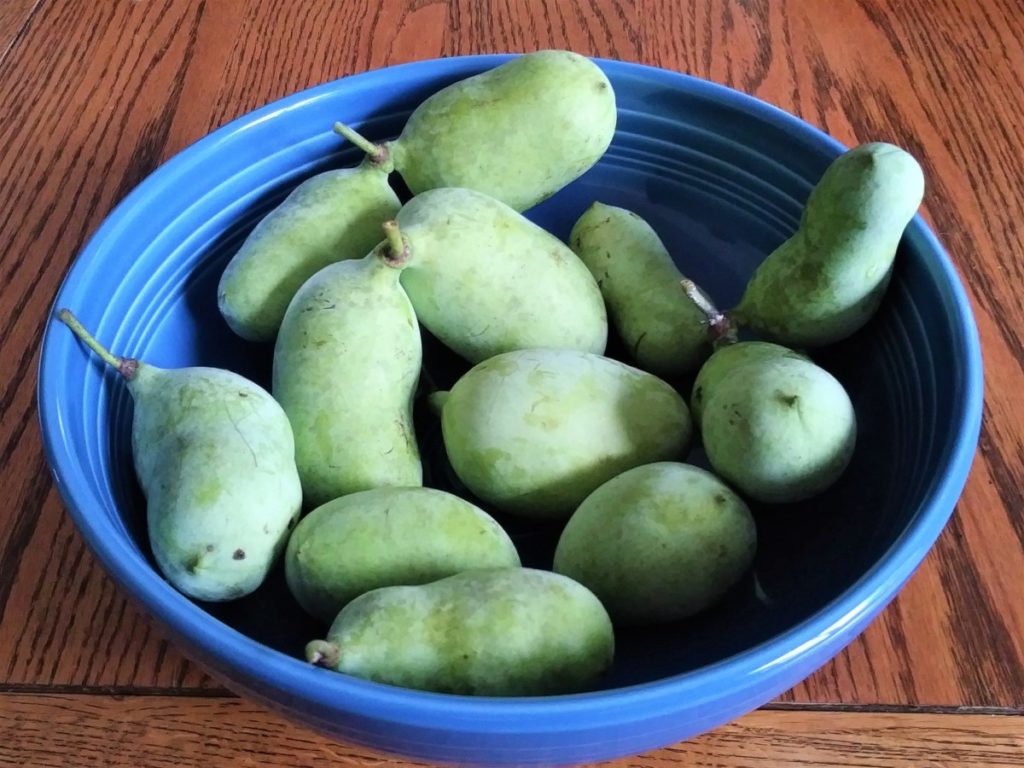
Handle them carefully, as the thin skin bruises easily—a primary reason why pawpaws aren’t sold commercially.
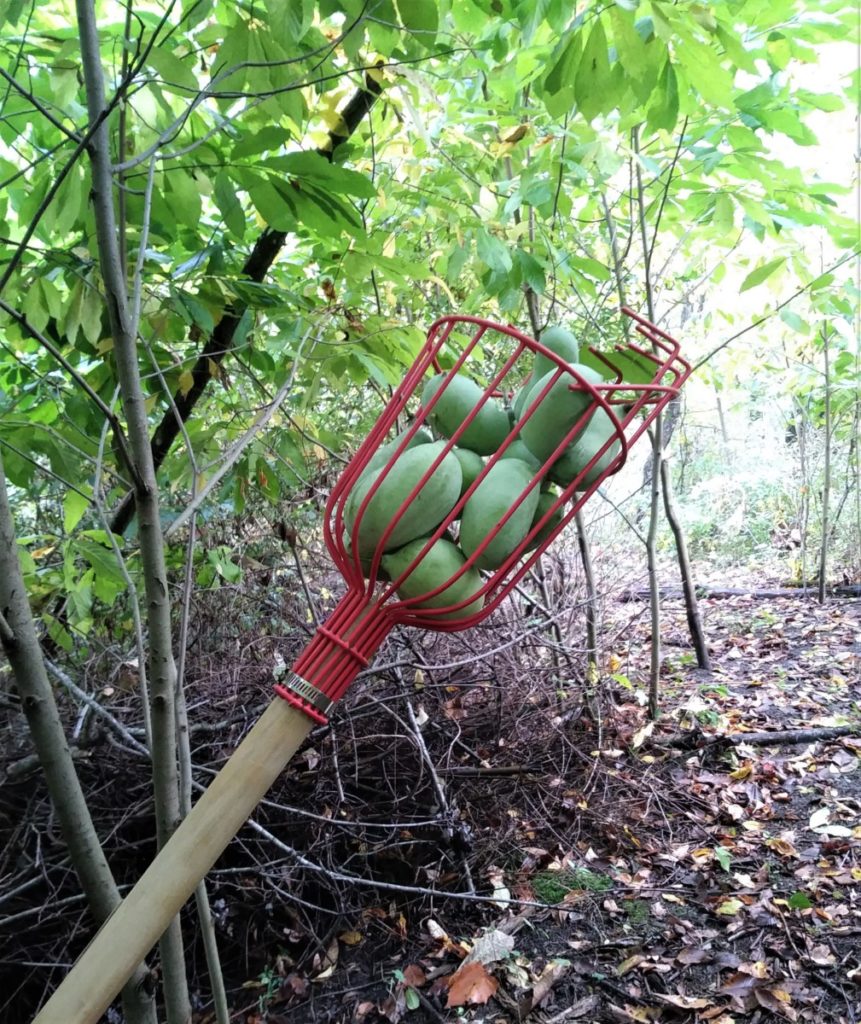
The fruit itself can vary in flavor from tree to tree, though it typically tastes reminiscent of a combination of bananas, pineapple, and mangos. The texture and coloring is similar to mangos without their stringiness.
Cut one open, and you’ll find yellow fruit with a custard-like consistency and large, inedible seeds. The mushy pulp will ooze right out, which means this is a fruit often best eaten with a spoon.
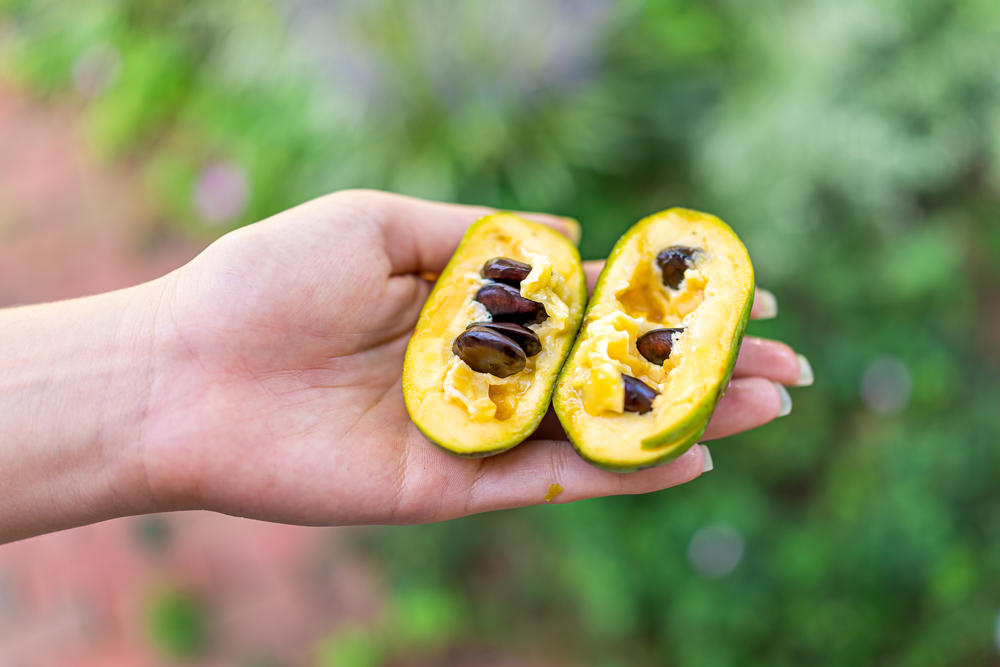
While many people enjoy pawpaw fresh, it’s also possible to use this tropical-reminiscent fruit in many recipes.
How to Use Pawpaw Fruit
One of the best ways to use pawpaws is to slice them open, remove the large seeds, and separate the inner pulp from the skin. It’s often easier to scoop everything into a bowl and separate the seeds that way, as they tend to stick fast.
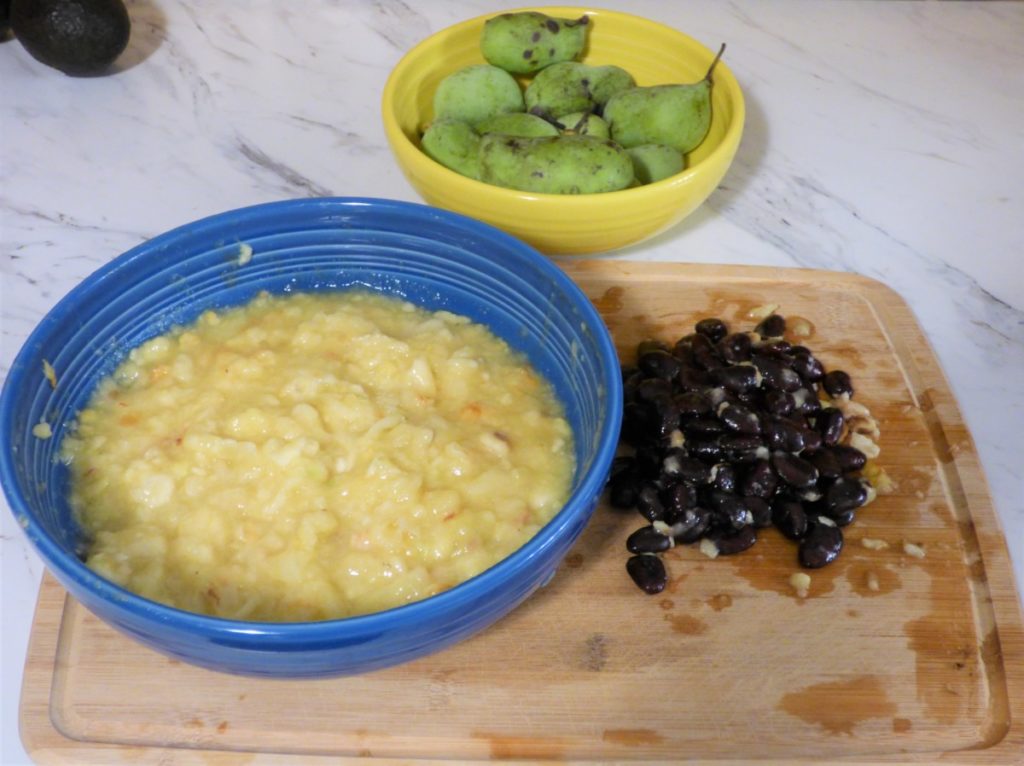
You can store pawpaw pulp in your freezer for months or keep the fresh fruit in your fridge for up to a week.
The resulting pulp is the perfect complement to a variety of recipes. Consider baking it into bread or cookies, blending them into smoothies, incorporating it into pudding, or even churning some into tropical-tasting homemade ice cream.
Some people even ferment pawpaw pulp and add it to homemade beers, brandies, and mead.
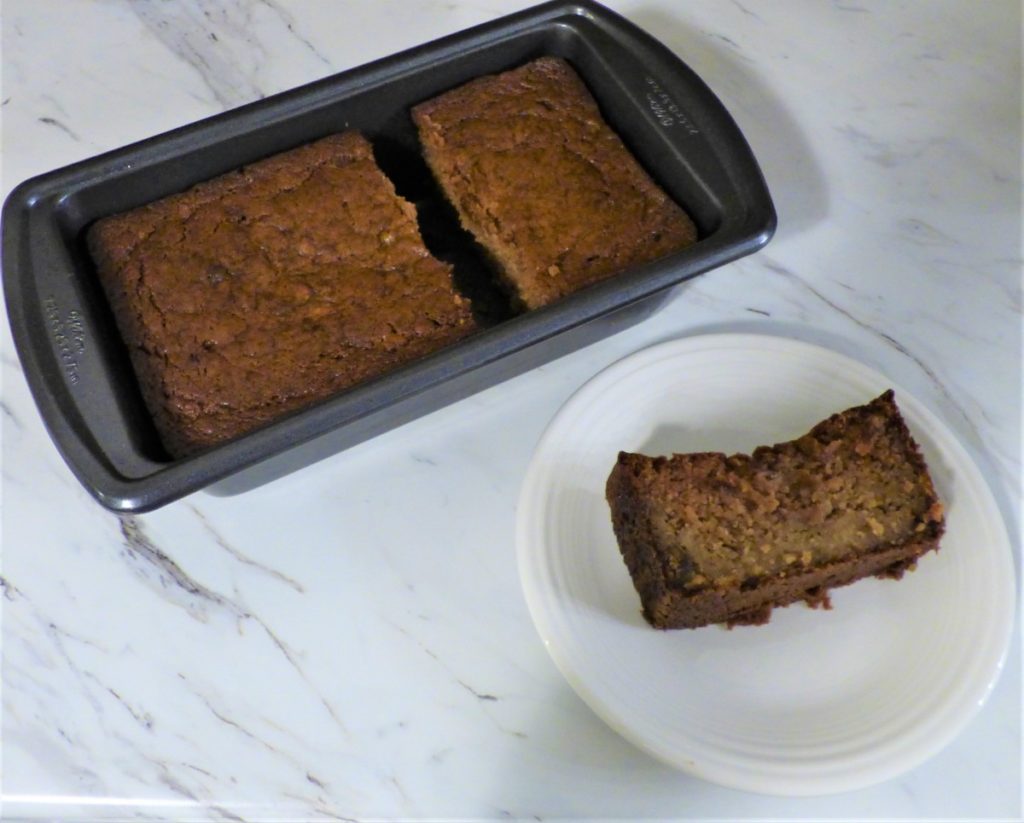
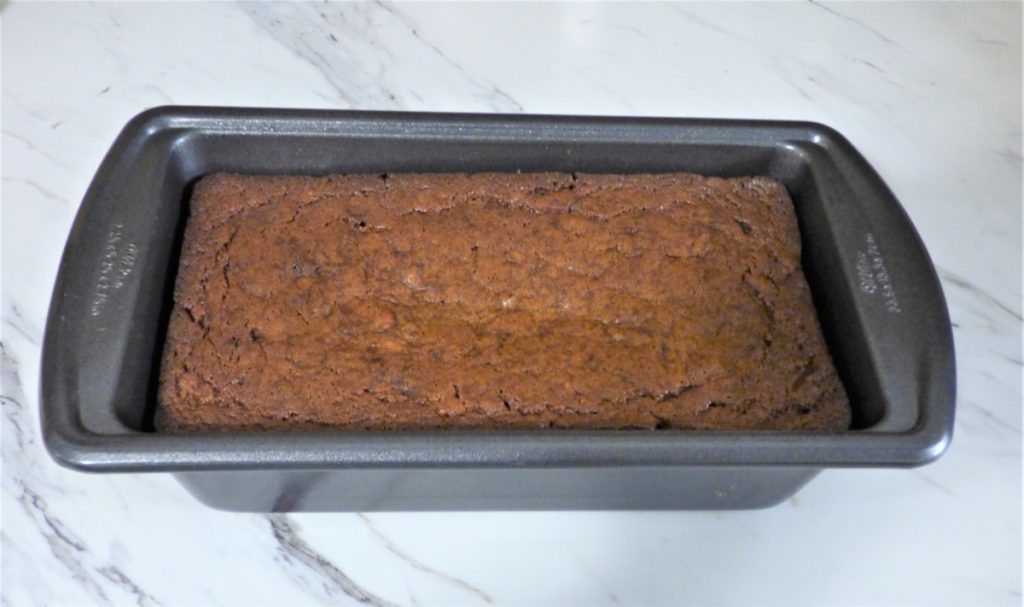
As a general rule, you can substitute pawpaws in almost any recipe that calls for bananas or persimmons.
However, don’t be tempted to turn this yellow pulp into fruit leather, as it can trigger severe nausea in many people. In fact, you might want to sample only a small amount of fruit at first to see if you are extra susceptible to these symptoms.
Order Pawpaw Fruit and Trees Online Today
For those lucky enough to forage for their own pawpaw supply, North America’s largest fruit is a culinary delight.
However, you’re not out of options if you live out of range. While pawpaw fruit is rarely available in regular stores, it’s often seasonally available at farmers’ markets and online. Earthy.com will sell you fresh pawpaws or frozen puree by the pound, giving you an option to experiment at home.
For those with more patience, it’s also possible to purchase pawpaw trees or seeds online to plant at home and start your own patch of wild native fruit.
By taking steps today, you’ll be able to enjoy this nutrient-rich food source for years to come.

Get the famous Rural Sprout newsletter delivered to your inbox.
Join the 50,000+ gardeners who get timely gardening tutorials, tips and tasks delivered direct to their inbox.

